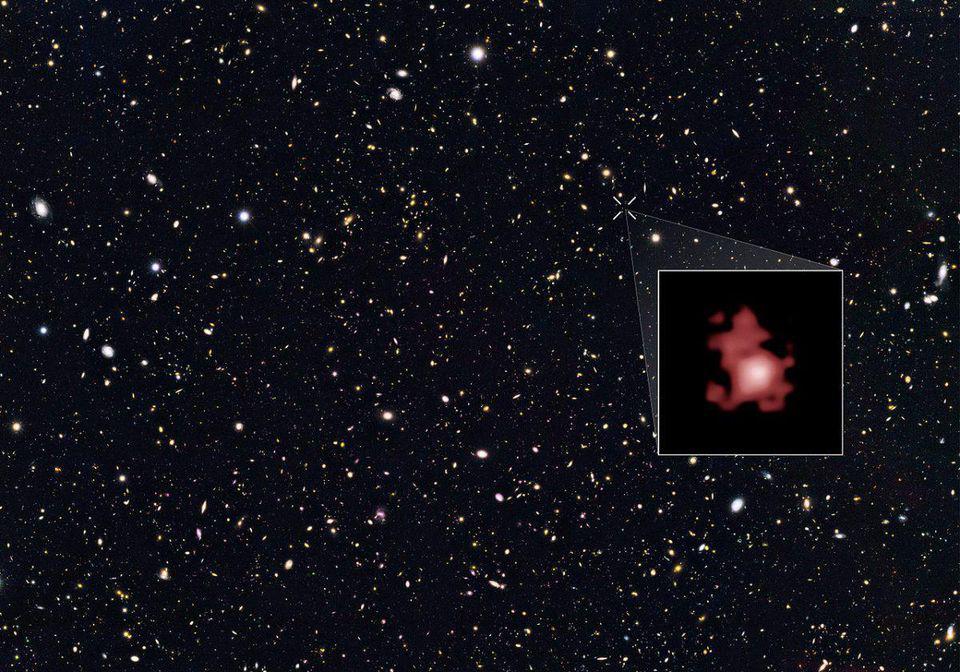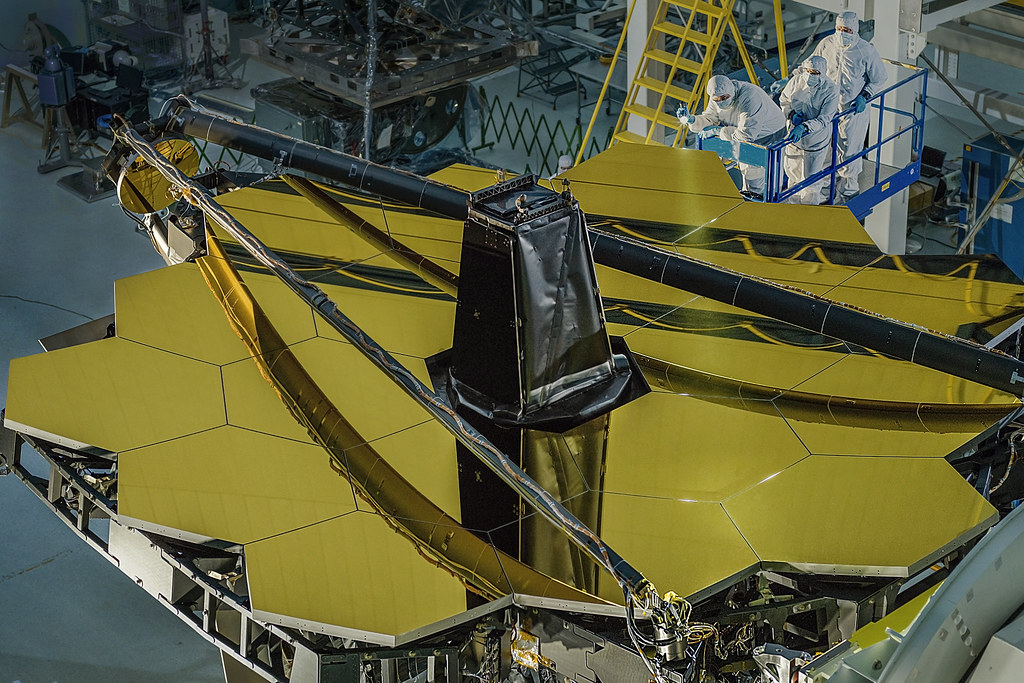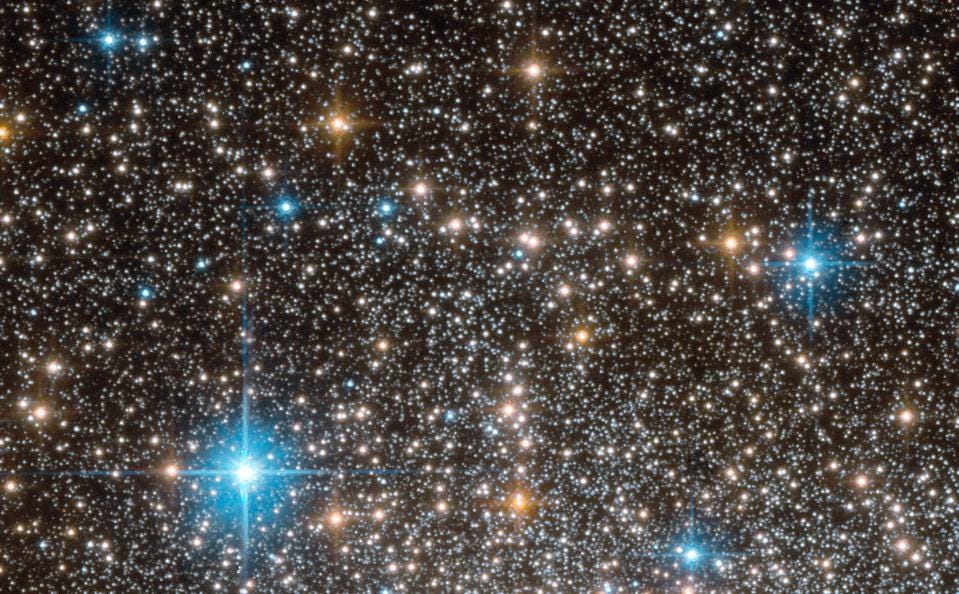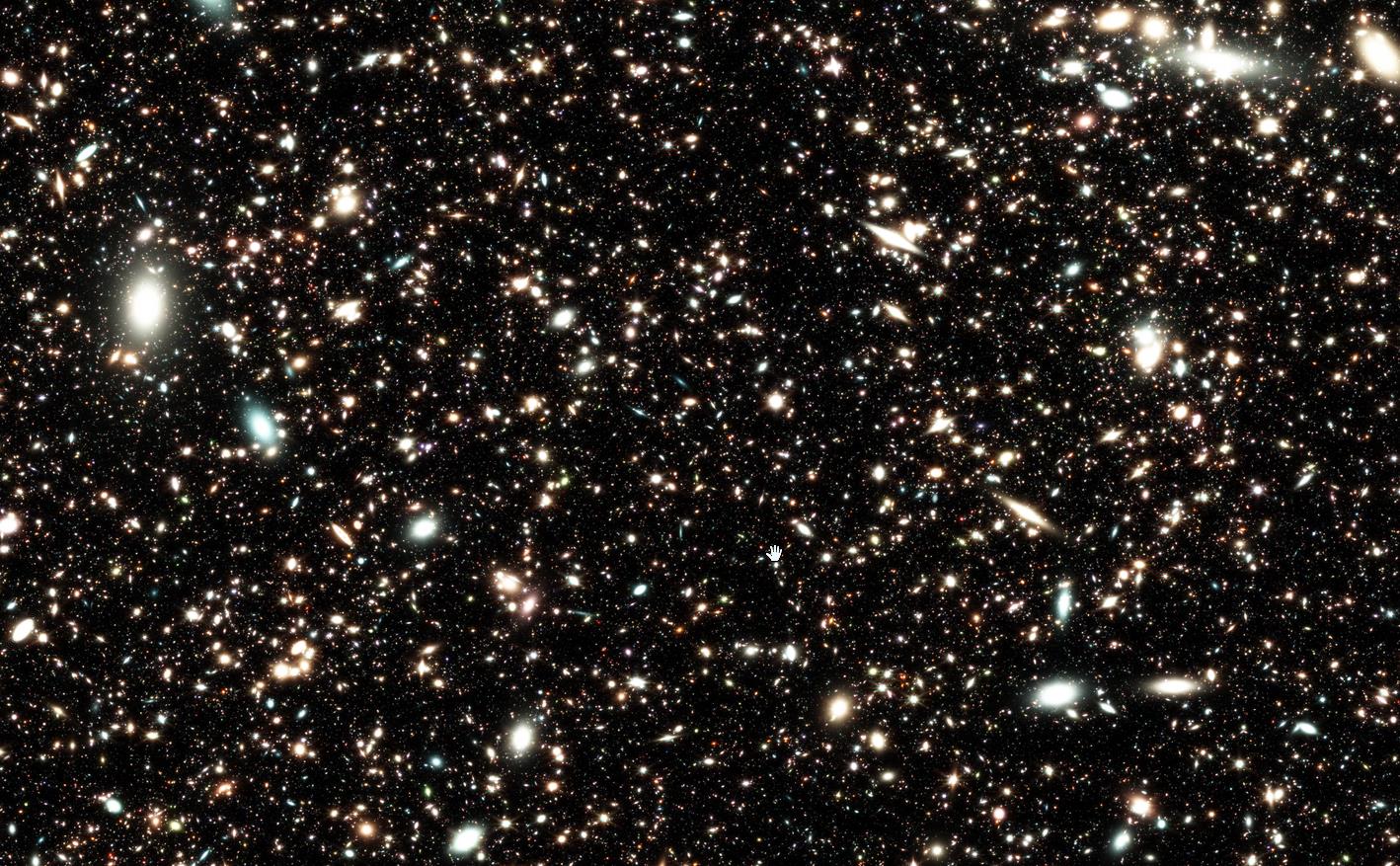Earendel, our most distant star, could be Hubble’s last hurrah
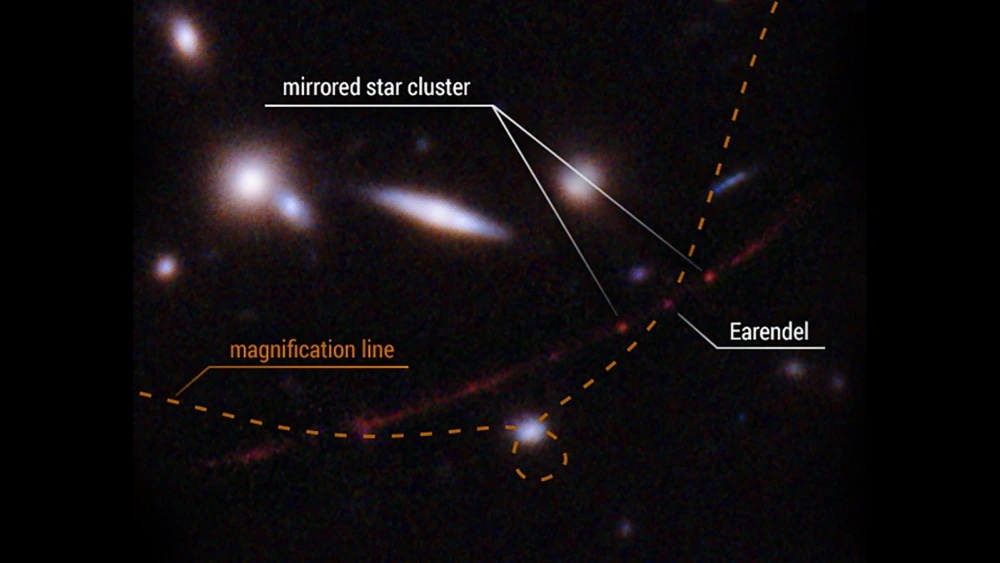
- Looking back across cosmic time and aided by a serendipitously placed gravitational lens, Hubble just broke the all-time record for most distant star.
- Known as Earendel, its light comes to us from an unprecedented 12.9 billion years ago: when the Universe was just 7% its current age. However, this is probably the last such cosmic record that Hubble will ever set.
- Here's why it took 32 years for it to set this one, and why JWST, not Hubble, will be the observatory to break this record.
Imagine it: you’re looking out across the Universe, searching for the most distant objects of all. If your goal was to break some sort of cosmic distance record, how would you go about doing it? Your instinct would probably be to take the biggest telescope you can, put it into space, and open your camera’s shutter for as long as possible. That’s not a bad plan, and certainly observing programs that have done precisely that have discovered some of the faintest and most distant objects from across cosmic time.
Sure, Hubble has done it numerous times, culminating in the eXtreme Deep Field view of the distant Universe. The James Webb Space Telescope, only about two months away from commencing its science operations, will likely take us even farther, breaking many of Hubble’s present-day records in short order. But there’s another piece to the puzzle that has allowed us to go even further: magnification. It takes a lot of sky coverage, a lot of time, and a bit of luck, but that’s precisely what the scientists on Hubble’s Reionization Lensing Cluster Survey (RELICS) program did. Here’s the science behind Hubble’s latest, and possibly last, record-breaking observations.
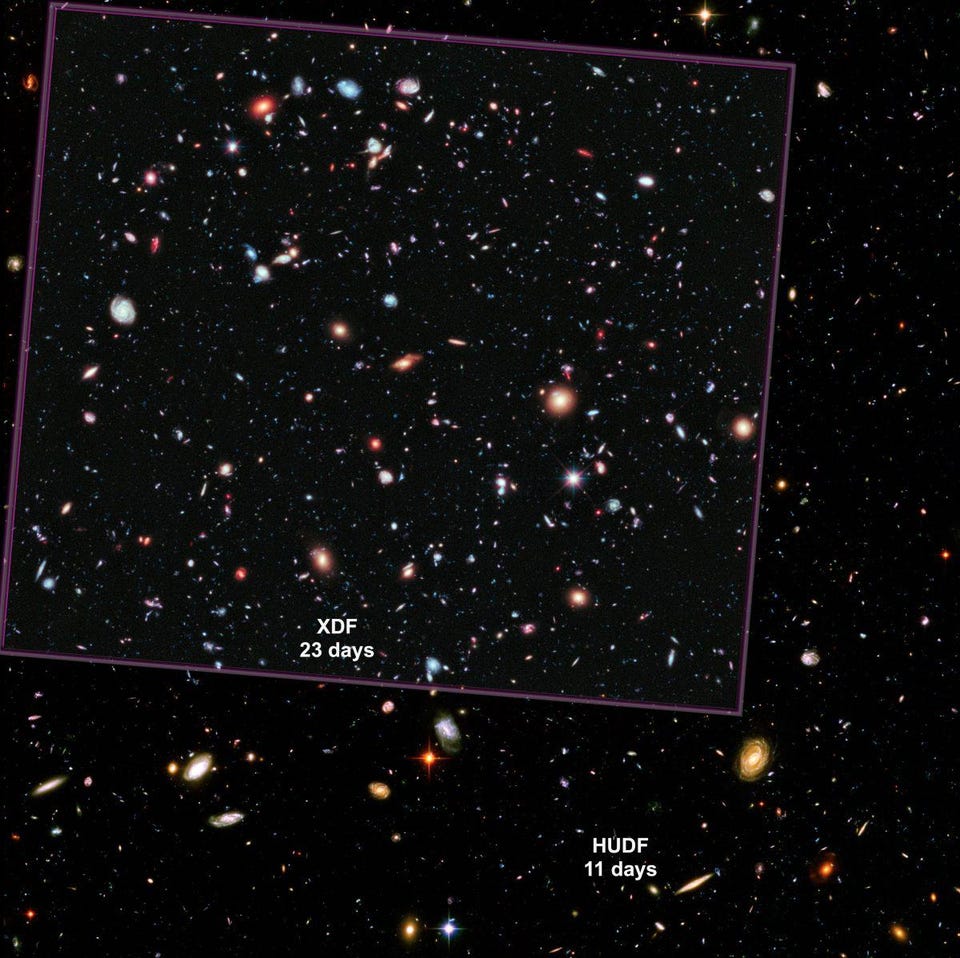
The limits of brute force
When it comes to detecting distant, luminous objects in astronomy, it’s all about light.
- Can you detect the presence of a distant object’s light? Only if it comes in above the background noise of your detector, and only if it arrives in the wavelengths your instruments are sensitive to.
- Can you resolve a distant object? Only if your telescope is large enough, and only if that object is well-separated enough compared to the other luminous sources nearby.
- Can you determine how far away that object is? Only if you gather enough light over a large enough wavelength range to analyze the object sufficiently.
You might think that with enough observing time, you could see it all, out to the limits of the observable Universe.
Unfortunately, that’s not the case at all. A telescope is basically a “light bucket,” where it gathers light in proportion to the surface area of its primary mirror multiplied by how long you spend observing a given region of the sky. Get a telescope with double the area, and you get double the light in a given amount of time. Use the same telescope to observe for double the time, and you double the light you collect. But if you want to see an object that’s twice as distant, you need to gather four times the amount of light, because of how light spreads out through space. If you want something just one-tenth as bright (or one-hundredth, or one-thousandth), you need ten (or a hundred, or a thousand) times as much observing time. Very quickly, unless you have absolutely no other use for your world-class observatory, you’re going to hit the limits of your capabilities.

How gravitational lensing surpasses those limits
Fortunately, the Universe has a way of magnifying the light from distant objects naturally: through the process of gravitational lensing. Gravitational lensing comes in two varieties: weak lensing and strong lensing. Whenever you have a clump of matter and/or energy in space, its presence causes an additional amount of curvature in the fabric of spacetime itself. Since light follows the path set by the curvature of spacetime, foreground masses cause the path of background light to bend and get distorted.
In most cases, the foreground masses are diffuse, and the alignment between our line-of-sight, the foreground mass, and the background light source is imperfect, and we only observe a mild distortion of that background light: weak gravitational lensing.
However, every once in a while, a strong source of gravitational lensing — like a large mass concentrated in a narrow-angle volume of space — will be serendipitously aligned with a background light source. When this occurs, you still get weak gravitational lensing, but you also get strong gravitational lensing, which spreads the light out over a much larger area on the sky than normal. Although most strong lenses can enhance a background object’s brightness by a factor of a handful, a perfectly aligned lens can enhance its brightness by tens or hundreds, as well as creating multiple images of certain objects.
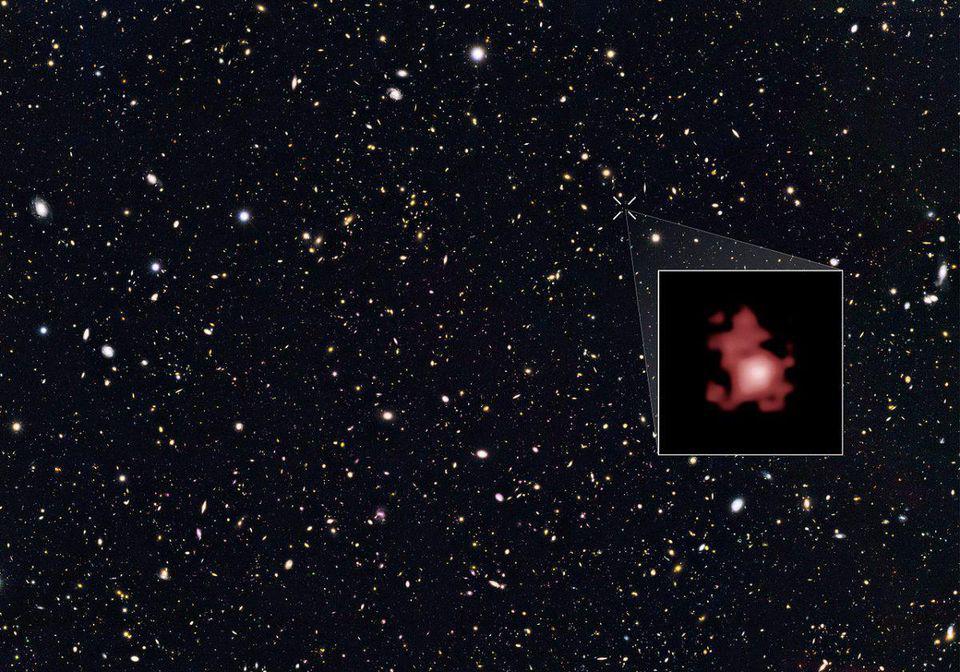
“Double serendipity” happened before
If you want to find the most distant light-emitting objects of all, you have to be prepared to overcome all of the obstacles that “looking back” presents. That means contending with:
- the expanding Universe, which stretches the wavelength of the emitted light to longer, lower-energy states by the time it arrives at your eyes,
- the need to cool your telescope, because heat acts as noise at infrared wavelengths,
- and the neutral atoms that were present in the early Universe for the first 500-600 million years, since they’ll block (emitted) ultraviolet and visible light very effectively.
In 2016, in a patch of sky knowns as GOODS-North, which was observed for long periods of time by three of NASA’s space telescopes — Hubble, Chandra, and Spitzer — a distant source of light unlike any other ever seen was discovered: GN-z11.
This object turned out to be a galaxy whose light had been traveling through the expanding Universe for 13.4 billion years, meaning that its light was emitted just 400 million years after the Big Bang: 3% of the Universe’s present age. It was only observable in the longest-wavelength Hubble filters of all, and even then, it only showed up because this particular line-of-sight had fewer neutral atoms (and was more heavily-reionized) than average, and also because a foreground clump of mass happened to gravitationally lens it. Because of the expanding Universe, it’s presently located some 32 billion light-years away, and its light has been stretched to more than twelve times its initially emitted wavelength.
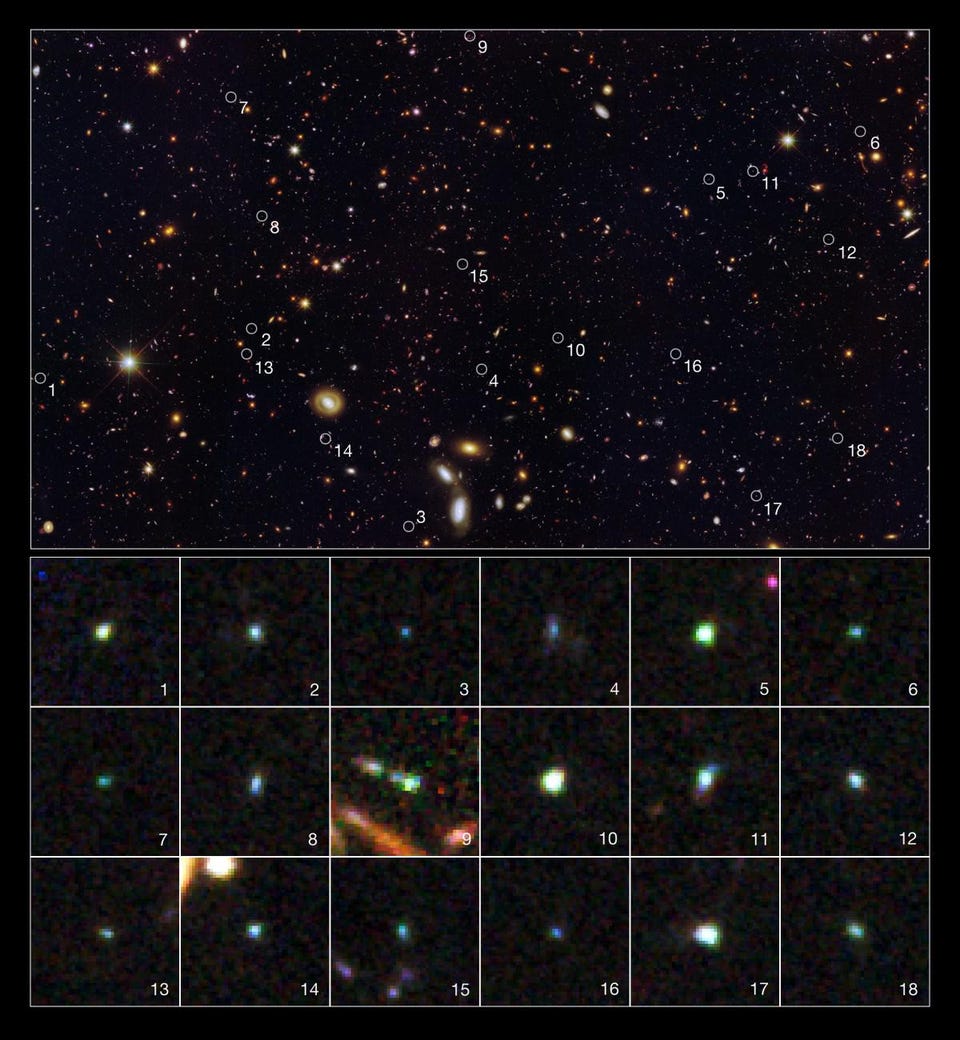
Going wider, not just deeper
A single image from the Hubble Space Telescope using its most advanced camera, ever, has a very narrow field of view: 202 arc-seconds on a side, or about 1/13,000,000th of the sky in most wavelengths of light. (The longest wavelengths of light are restricted to even smaller fields-of-view.) If you want to benefit from the advent of a gravitational lens, your best bet is to gather the greatest amount of light that has the potential to be gravitationally lensed. That means looking at regions of space where there are copious massive clumps of matter, and yet where your telescope is capable of resolving nearby background objects against that bright, massive foreground.
Rather than go as deeply as possible in one region of sky, it’s far more efficient to go less deep but wider, vastly increasing your search area, and with it, your potential to find a significant number of background objects that receive this serendipitous enhancement from strong gravitational lensing. If you were to take a look through the most distant astronomical objects known, you can see the benefits of going wider rather than deeper, as almost all of the objects on that list come from wide-field surveys, not from the deepest deep fields possible.
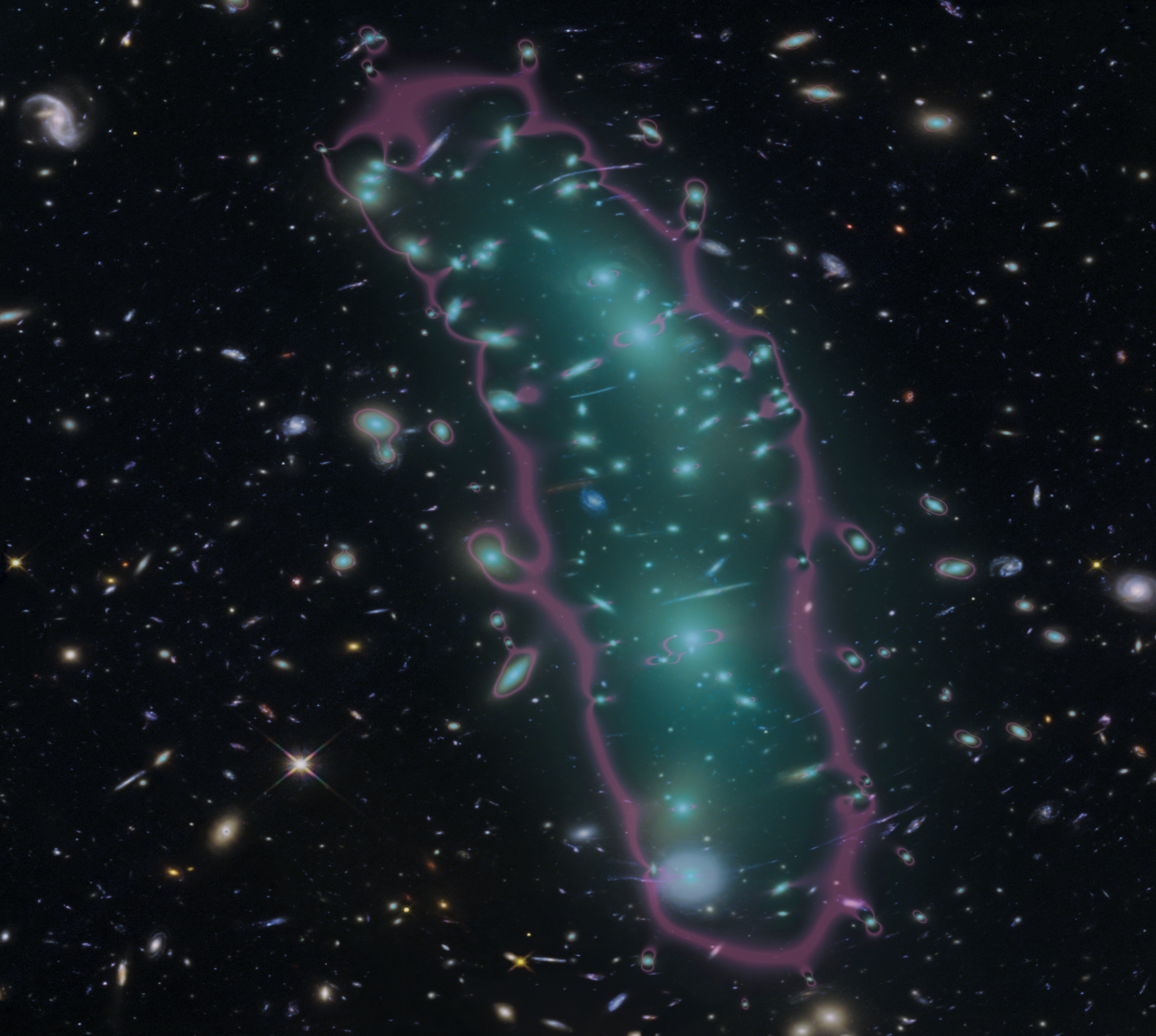
Why looking at galaxy clusters is the key
Of all the locations in the Universe, the places where the largest clumps of mass gather in one narrow region on the sky are galaxy clusters. Containing hundreds or even thousands of times the mass of the Milky Way, even when we look back billions of years across cosmic time, these giant collections of matter curve larger regions of spacetime by more significant amounts than any other structure. More importantly, these regions also offer the greatest potential for magnification enhancements of any in the Universe, capable of effectively “brightening” background objects by factors of hundreds over long periods of time.
When galaxy clusters act as gravitational lenses, they frequently produce some of the most spectacular optical sights ever seen. Background objects can be stretched into great, giant arcs, spreading a galaxy’s light out over a large area and allowing us to examine different parts of a distant galaxy that would otherwise be too far away for such a measurement. Background objects, and in some cases, different parts of those objects, can appear as multiple images across the sky, while intervening microlensing events, occurring when additional masses pass across or near the line-of-sight to the background object, can offer even further magnification enhancements, although those events are normally temporary.
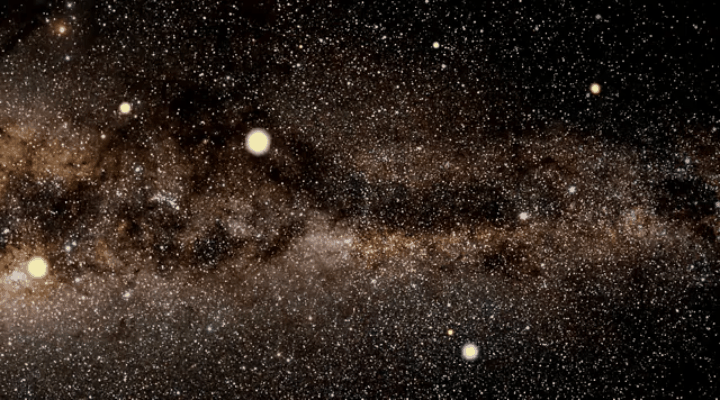
The magnificent lens of Earendel
On March 30, 2022, a new paper was published in the scientific journal Nature, announcing the discovery of a single star now known as Earendel, whose light was emitted a whopping 12.9 billion years ago. A single star was magnified by a factor of thousands by a foreground galaxy cluster, and that magnification and brightness has remained unchanged over a 3.5 year timespan between the initial imaging and follow-up observations. The star itself is incredibly hot and intrinsically blue, and is estimated to weigh at least 50 times the mass of the Sun, making it one of the most inherently bright stars ever seen.
Four independent lens-modeling techniques were used, and all four of them put Earendel within 0.1 arc-seconds (1/36,000th of a degree) of what scientists call “the critical curve,” or the location of maximum magnification that would yield just a single image. Even folding in the different models and the uncertainties, only a single image appears, and the total magnification factor ranges from a low of 1000 up to a maximum of 40,000. If this object turns out to be a single star, as expected, it will easily become the most distant star in the Universe by a wide margin.

How far away is the new farthest star?
Owing to the expanding Universe, this star’s light was emitted just 900 million years after the hot Big Bang: when the Universe was only 6.5% of its present age. Today, after a journey of 12.9 billion years, that star’s location is 28 billion light-years away, and its light has been stretched to 720% of its original wavelength. Most importantly, there’s a strong upper limit to its radius that, in all instances, is smaller than about 1.1 light-years. (In most instances, it’s more like a quarter of a light-year.) This is much smaller than the physical size of all known star clusters. At best, it’s a single star; at worst, it’s a multi-star system.
This smashes the old record by a tremendous margin. Previously, a star nicknamed Icarus was the most distant, also lensed by a foreground galaxy cluster. However, it was only visible for a brief while. At its position, it’s normally only magnified by a factor of 600; its brightness became enhanced by a total factor of about 2000 when an additional foreground mass temporarily passed in front of it. It then reverted to its original brightness, and is now invisible again. Icarus, also known as MACS J1149+2223 Lensed Star 1, had its light arrive after a journey of 9 billion years, placing it about 14-to-15 billion light-years away.
Earendel, all told, is almost twice as far away as the previous record-holder for most distant star.
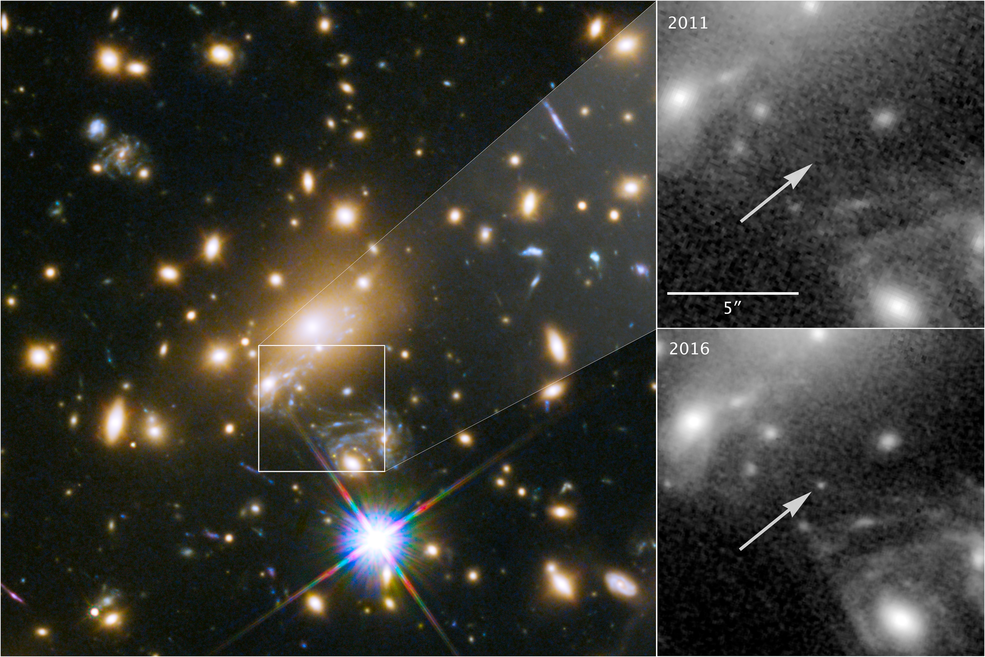
Will this record ever be broken?
Fortunately, this is an easy one: undoubtedly. The RELICS program that discovered Earendel was explicitly designed to not go as deep as other surveys, but to go wider and survey the space around a greater number (more than 20) of massive, relatively compact galaxy clusters. When the team that discovered Earendel ran the numbers, they determined that the probability of finding a star such as this appearing so close to the critical line of maximum magnification was up to a few percent. In other words, finding Earendel, or an object like it, was a fortunate discovery, but not an unreasonable occurrence.
Still, it’s so much more distant than all the individual stars discovered previously, just like GN-z11 was so much more distant than all the other galaxies discovered previously, that data from the Hubble Space Telescope is extraordinarily unlikely to reveal anything farther than this in its class. Hubble, remember, has been in operation for 32 years, and has set a large number of distance records during its life, including perhaps 80% of the most distant individual stars and galaxies ever found. Over its lifetime, it’s imaged less than 1% of the sky, cumulatively, but it certainly has made the most of the narrow slice of the Universe it’s been able to view.
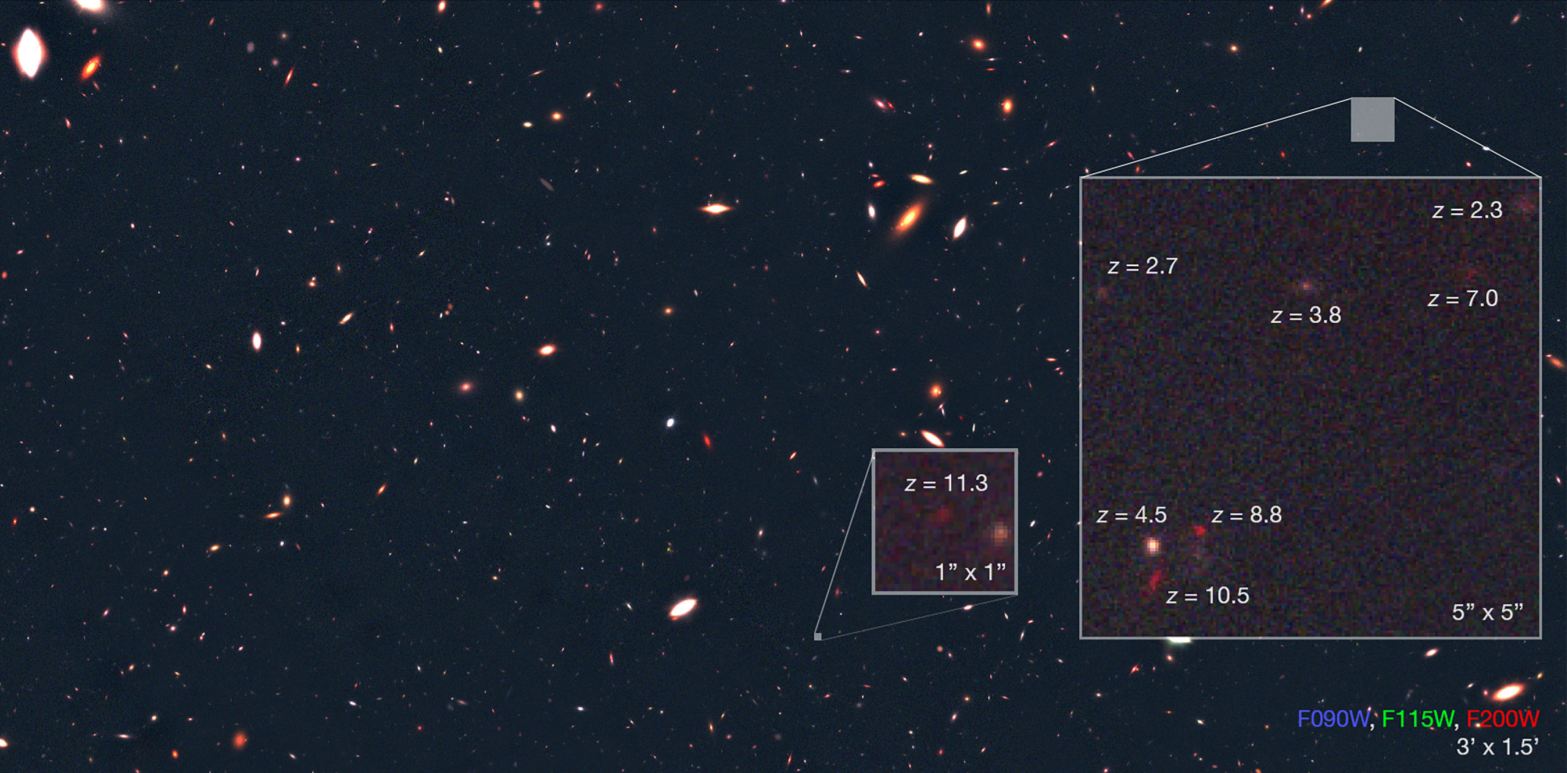
But all of these records should be superseded in relatively short order by humanity’s newest flagship observatory: the James Webb Space Telescope. With a larger mirror, JWST will have approximately 7 times the light-gathering power of Hubble. With its location at the L2 Lagrange point, its passive sunshield and active cooling of its mid-infrared instrument, and ambitious observing programs designed to view large regions of the sky more deeply than ever before, it would be very surprising if we didn’t break the record for most distant galaxy and most distant star by the end of its first year of science operations.
In fact, JWST is so good that one of the approved observations that will take place in that first year is a total of more than 12 hours of observations of this one star — Earendel — in multiple wavelengths of light. The goal is to break this lensed and magnified star’s light up into its individual components, and spectroscopically analyze it to determine precisely what its intrinsic properties are. There’s a small chance that it might not be a star, after all, but better observations are the only way we’ll find out.
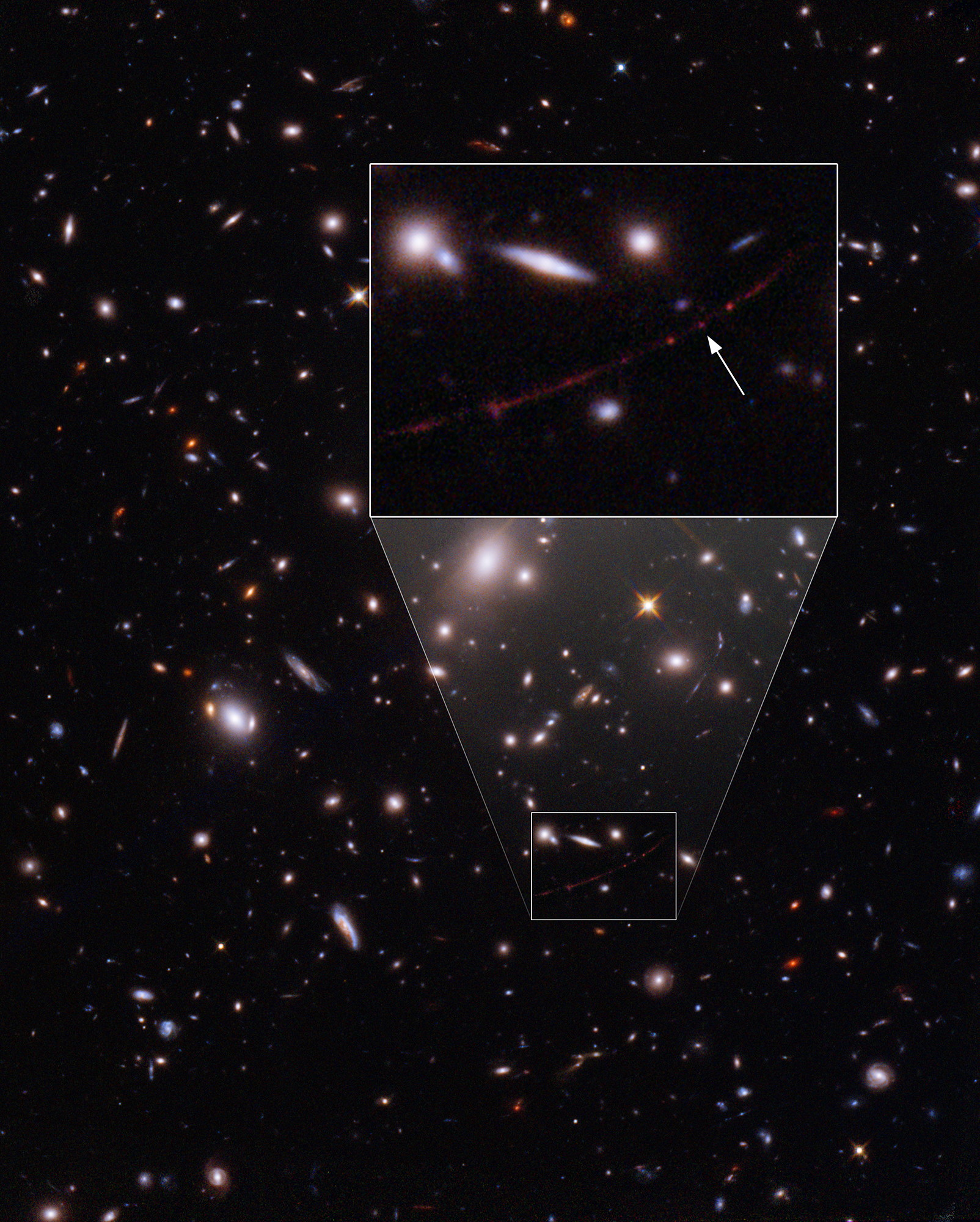
In the meantime, enjoy this new record-breaking discovery that truly takes advantage of what Hubble, at its limits, is capable of. It may turn out to be the final discovery from Hubble that’s truly revolutionary, but how wonderful is it to usher in a new era in astronomy with a final flourish from the most prolific telescope in human history?
